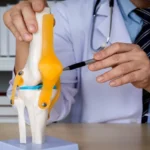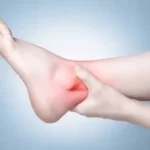Recovering from surgery is a process that involves not only healing the surgical site but also effectively managing pain. Post-surgical pain is common, and while it often improves with time, poor pain control can slow recovery, increase complications, and affect overall quality of life. Fortunately, there are various pain management strategies for post-surgical recovery that help patients heal comfortably and safely.
Understanding Post-Surgical Pain
After surgery, pain is typically caused by tissue damage, inflammation, and the body’s natural healing process. Pain levels vary depending on:
- The type and extent of the surgery
- Individual pain tolerance
- Presence of other medical conditions
Proper pain management is essential, not only to reduce discomfort but also to encourage mobility, prevent complications, and promote faster recovery.
Why Pain Management Matters in Recovery
Managing pain effectively during recovery has many benefits:
- Encourages early movement: Reduces the risk of blood clots and pneumonia.
- Improves sleep quality: Essential for healing and immune function.
- Reduces stress and anxiety: Enhances overall well-being.
- Prevents chronic pain: Poorly managed acute pain can turn into long-term pain.
Common Pain Management Strategies
1. Medications
Medications remain a cornerstone of post-surgical pain control. Options include:
- Opioids (short-term use): Effective for severe pain but must be used carefully to avoid dependency.
- Nonsteroidal anti-inflammatory drugs (NSAIDs): Reduce inflammation and pain.
- Acetaminophen: Often used in combination for moderate pain.
- Local anesthetics: Nerve blocks or injections to target specific areas.
2. Physical Therapy and Movement
Early, gentle movement helps reduce stiffness and restores function. Physical therapists guide patients through safe exercises that promote healing without straining the surgical site.
3. Cold and Heat Therapy
- Cold therapy (ice packs): Reduces swelling and numbs pain.
- Heat therapy: Improves blood flow and relaxes muscles once initial swelling subsides.
4. Relaxation and Mind-Body Techniques
Stress and anxiety can amplify pain. Techniques such as:
- Deep breathing exercises
- Meditation
- Guided imagery
help patients cope with discomfort and improve mental well-being.
5. Lifestyle and Nutrition Support
- Staying hydrated and eating nutrient-rich foods boost healing.
- Avoiding smoking and alcohol speeds recovery.
- Adequate rest balances the healing process.
Multimodal Pain Management Approach
Instead of relying on a single method, many doctors use a multimodal approach—combining different strategies (like medication, physical therapy, and relaxation techniques) to maximize pain relief while minimizing side effects. This holistic approach is considered best practice in modern pain management.
Safety Considerations
- Always follow your doctor’s instructions when taking pain medications.
- Never adjust dosages without consulting a healthcare provider.
- Inform your care team about any allergies or previous reactions to pain medications.
- Avoid overexertion during physical recovery.
Conclusion
Effective pain management after surgery is essential for smooth recovery and long-term health. By combining medications, physical therapy, lifestyle changes, and mind-body techniques, patients can manage discomfort, restore mobility, and improve overall well-being. The key lies in personalized pain management—a plan tailored to each individual’s needs, surgery type, and health condition.
FAQs
1. How long does post-surgical pain usually last?
Pain generally improves within a few days to weeks, but recovery time depends on the type of surgery and individual healing capacity.
2. Are opioids safe for post-surgical recovery?
Opioids are effective for short-term pain relief but should be used carefully and under strict medical supervision to avoid addiction risks.
3. Can physical activity worsen post-surgical pain?
If done incorrectly, yes. However, guided physical therapy helps reduce pain, improve strength, and speed up recovery.
4. Is it safe to use home remedies like ice packs after surgery?
Yes, cold therapy is commonly recommended for reducing swelling and pain. Always follow your doctor’s advice on duration and frequency.
5. What is the best overall strategy for post-surgical pain management?
A multimodal approach—combining medication, physical therapy, and relaxation techniques—provides the most effective and safest results.











